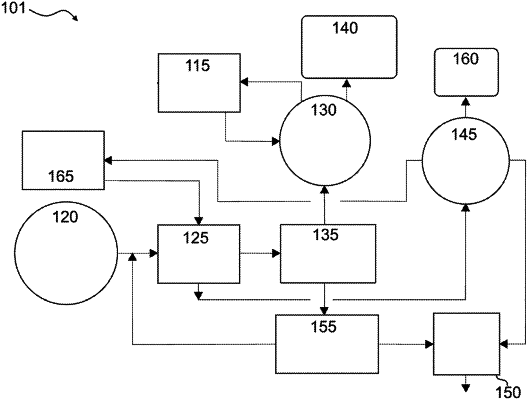| CPC C10G 3/46 (2013.01) [C10G 3/50 (2013.01); C11B 3/006 (2013.01); C11C 1/04 (2013.01); C11C 1/10 (2013.01); C11C 3/12 (2013.01); C10G 2300/1011 (2013.01); C10G 2300/202 (2013.01); C10G 2300/4006 (2013.01); C10G 2300/4081 (2013.01); C10G 2300/708 (2013.01); C10G 2400/04 (2013.01)] | 20 Claims |

|
1. A method for producing fuel comprising C10 to C18 alkanes, the method comprising:
introducing water and a primary feedstock comprising biologically-derived triglycerides and catalyst poisons into a first reaction chamber under counter-current flow conditions;
hydrolyzing the triglycerides of the primary feedstock within the first reaction chamber for at least an hour and simultaneously obtaining, via liquid-liquid extraction, (i) an aqueous fraction comprising glycerol and a first portion of the catalyst poisons and (ii) a non-aqueous fraction comprising a second portion of the catalyst poisons and free fatty acids resulting from hydrolysis of the triglycerides;
obtaining an intermediate feedstock comprising at least a portion of the non-aqueous fraction;
distilling the intermediate feedstock to form a purified intermediate feedstock comprising free fatty acids and a bottom stream containing unreacted triglycerides, diglyceride, monoglyceride, free fatty acids, and remaining catalyst poisons;
hydrotreating the purified intermediate feedstock in a second reaction chamber comprising hydrogen and a metallic catalyst to produce the fuel comprising C10 to C18 alkanes;
removing the remaining catalyst poisons from the bottom stream to form a recycle stream containing unreacted triglycerides, diglyceride, monoglyceride, and free fatty acids; and
returning the recycle stream to the first reaction chamber.
|